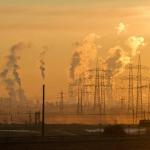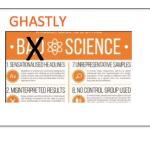To begin with, the EPA rule in question is about ambient air quality standards, not emissions, even though the latter is responsible for the former.
PM2.5
Without a doubt, preparedness for future disasters is primary, but images of deserted streets and highways prompt another take.
Let’s begin with the data. The researchers used COVID-19 related deaths by county as compiled by Johns Hopkins.
PM2.5 is also known as “fine” (as opposed to coarse) particles, and sometimes as “soot” (a misnomer used by the New York Times).
Over time as our understanding and instrumentation have changed and improved, we have reframed the villain from particulate matter as a whole to its various components.
The “pivotal regulatory science” used in setting air pollution standards are epidemiological studies measuring the effects of particulate matter (PM) on our health.
An article published in Science on volatile chemicals has predictably entered the mainstream media featuring concerns about how we are polluting our planet more and more with household products.










